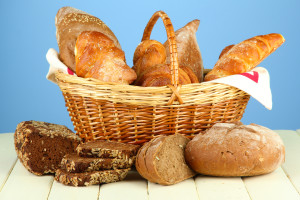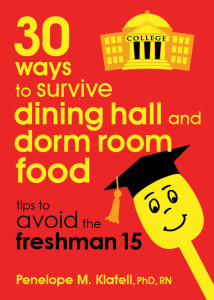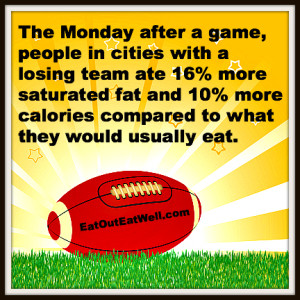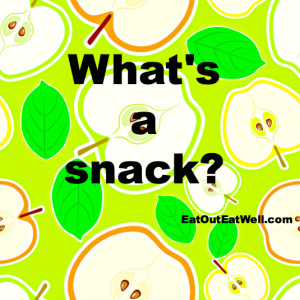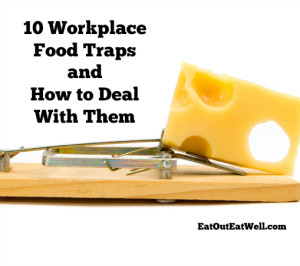 Most of us spend a lot of hours at work. That could mean time at the office, at home, in the car, on an airplane, in a hotel, in a retail store, or anywhere else you conduct your business.
Most of us spend a lot of hours at work. That could mean time at the office, at home, in the car, on an airplane, in a hotel, in a retail store, or anywhere else you conduct your business.
All of those long, hard-working hours can mean enormous weight control challenges— especially with ever-present food, a good deal of which is carb and fat loaded – and an environment that can be fast paced, stressful, overwhelming, boring, or downright exhausting.
Do You Use Food To Cope and Procrastinate?
So what do we do? We use food to cope, procrastinate, or push off mind-numbing boredom and fatigue. All too often that means stuffing ourselves with more calories than we need. And, they’re not usually from nutritionally fantastic sources but from sugary, salty, and fatty nutritionally poor reward foods.
A lot of us don’t even think about how and why we eat, especially while we’re working. The way we feed ourselves — particularly in the face of stress or overwhelm — becomes a default habit pattern. In other words, we mindlessly reach for the high calorie comfort food.
10 Food Traps and Way to Deal With Them
- Work on identifying what you usually do when you’re stressed, tired, or angry. If your usual action is to grab a cookie or candy bar try to manage your stress without the reward foods. Instead of turning to a high-calorie, high-fat trigger foods to calm your nerves or as a reward, try some healthy, stress-relieving practices like deep breathing and meditation. Drink a glass of water – sometimes you’re thirsty, not hungry – and water fills your stomach.
- Make a deal with yourself to work some activity into your workday. Instead of using eating as an excuse to take a break, take a walk instead – even if it’s around your office or to another floor, and make it part of your daily routine. The quick walk will get you out of the immediate environment, let you blow off some steam, and burn an extra calorie or two. If you travel, walk in the airport rather than plopping yourself down in the food court or bar.
- If you eat out or order take out for any of your meals, scout out the local restaurants, delis, salad bars, and your own workplace lunchroom. Identify the meal choices that are the best for you and make them your “go-tos” so you’re not caught in the trap of being starving or too busy to care. That’s when you’re in danger of ordering – and eating — a whole pizza followed by a piece of chocolate cake. When you’re going out with a group of co-workers, be the one to suggest the restaurant with the healthier food options so you’re not influenced by others’ suggestions and choices.
- If you plan your route to work to pass your favorite coffee shop with the absolute best blueberry muffins or you find yourself using the rest room on the next floor because you have to walk by the vending machine with peanut M&Ms, think about changing your route — don’t taunt yourself with temptation.
- Do some thinking and planning. If you’re going to have a snack, plan for it – and know what you’re going to eat and stick to your choice. Contemplating your choices in front of a bakery display or vending machine filled with candy or salty treats is a sure fire recipe for caving in. Don’t deny yourself food – just make it good food.
- Change your habits. Ditch the candy dish on your desk. People with candy within an arm’s reach report weighing 15.4 pounds more than people without the candy dish in residence on their desks. Pack your lunch more often, and eat with a friend instead of at your desk. When you through the cafeteria line, pick up a piece of fruit first, which seems to trigger a chain reaction of healthier choices.
- There’s always a birthday, a holiday, or someone has brought in leftovers from their kid’s party or a recipe that you just have to taste. Of course, the reason they brought in the leftovers is because they don’t want them hanging around their house tempting them. Have a strategy for the inevitable food fest of leftover cake, pizza, and bagels. Perhaps allow yourself a once or twice a week treat. Just don’t make it part of your routine to visit the snack room to scrounge for the leftover cake.
- Have your own personal “no dip” policy: the quick hand dip into the candy bowl at the receptionist’s desk, or the jelly beans on your partner’s desk, or into the open box of chocolates or cookies on the counter. Use whatever reason works for you – maybe think about all of the other hands – and where those hands have been – that are also dipping into the same bowl.
- Is your desk drawer filled with reward food? Do you stare at it every time you open the drawer, tempting fate?Clean out your desk. If your favorite reward food stares at you every time you open your drawer, aren’t you tempting fate? It’s pretty difficult not to give in to the pop tart or peanut butter cup when you’re struggling to stay awake and finish that long boring project.
- Prepare for a snack attack. Have a stash of healthy food available to curb your hunger, so you don’t go searching for someone else’s candy or cookies. People tend to get up when they’re hungry, even people with stationary jobs. Instead of walking to the vending machine, walk to the healthy stuff whether it’s in the snack room or down to the newsstand in the lobby.
The Bottom Line: See it — Eat it
It doesn’t seem to matter if the beckoning food is in your drawer, on someone else’s desk, in the snack room, in the waiting room, or the conference room. When we see food, particularly reward and comfort foods, the thought gets into your head – and it seems like you just have to have it. Put the virtual blinders on, clean out your desk, take an alternate route, or make a deal with yourself to just have one bite, one piece, a single portion, or small handful.
